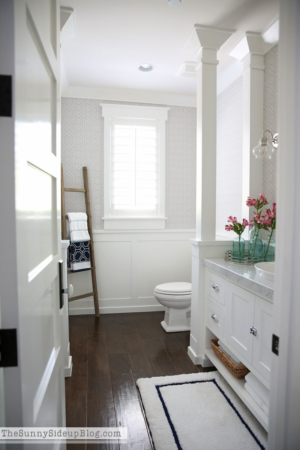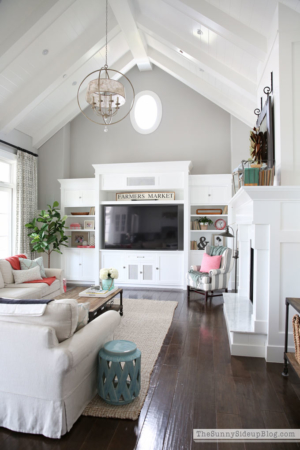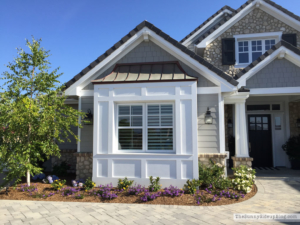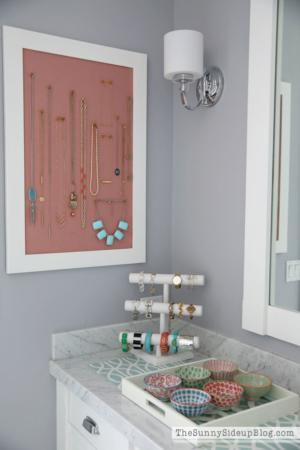GET APPROVAL
The first step in buying a home is mortgage approval. It will define how much you can spend and where you can buy. If you know what your budget is before you start looking, your search will be far more fruitful. An estate agent will never “sale agree” a property with a buyer without finance being in place first. Due to the current high demand for properties the estate agent will look for proof of your funding before taking any bid seriously. If you are trading up, it is a good idea to sell first so you have funds in the bank before you go looking – it gives you more purchasing power.
It also means a sale can be agreed quickly. Strategically, this makes you a “ready-to-go” purchaser rather than being part of a chain. Some vendors prefer a “ready-to-go” purchaser over someone whose agreement is contingent on them selling their property first. Bank of Ireland's House-Hunter mortgage approval in principle lasts for six months so this gives you time to look at properties at that market value.
THE LURE OF LOCATION
A property can, subject to planning permission and funds, be altered and given a facelift, so bear that in mind when you start looking. The amount you have to spend will determine where you can live. Search for properties in your preferred location and view the less visually appealing homes at lower prices to compare the different types of housing stock in the area for value.
Before you start, make a list of everything you would ideally like to have in and near your home. If buying with someone else, have them do likewise. Once you've found the commonality to each list, you can decide which requirements are deal breakers and which are not so important.
If you have children, proximity to schools will be a major factor. Amenities such as transport, parks and shops are another. For instance, if you like sailing for example then you might prefer Portmarnock, Malahide or Dún Laoghaire over Ranelagh or Terenure.
RESEARCH
Once you know your spending power you can check what prices similar property types sold for – ones that have been sold since January 2010 – on the Property Price Register. But many properties don't appear immediately on the register. You can also ring the estate agent that sold the property and ask them.
Sales that predate January 2010 won't be listed. For that you'll have to go online and read old sales reports. The Irish Times archive is a good place to find a lot of these answers. You may also find additional information on that property's size, condition and sometimes photographs. General internet searches on The Property Pin and other property websites may also reveal useful information. You could compile the data and compare each by condition, size and orientation and then work out an average cost per square metre on a specific road. This will help you prioritise the properties you are viewing by using more than a simple asking price.
ASK QUESTIONS
If you have a builder friend, coax and cajole them to accompany you on your first few viewings. He or she will be able to point out things to watch out for like subsidence, water damage and other potential issues that may need costly repairs.
Then it's up to you to ask pertinent questions. The more questions you ask the more informed you will be about the condition of any property that you're serious about.
Ask the estate agent selling the property everything you can think of. If they don't know the answers to your questions, ask them to find out. You need to be as well-informed as you possibly can. This is all part of the due diligence process that needs to be carried out before you place any bid on the property. “Buyer beware” is a term often used at this juncture. The onus is on you to find out as much as you can before making your decision.
Here are some questions you shouldn't be afraid to ask:
- When was the attic converted and is the conversion compliant with current building regulations?
- If the property has been renovated does it have a certificate of compliance?”
- When was the heating and/or wiring last upgraded?
- Was the building ever flooded?
- Were there ever any flood claims in the neighbourhood?
- Why are the vendors selling?
- Are they trading up (if so they may need a minimum sale figure? Don't be afraid to ask what that magic number is) or trading down (if so they may not be in a hurry so may wait for their desired asking price)?
- When do the vendors want to close? (If you have your finance arranged and no property to sell, you are in a better position than many other buyers and may present the most attractive option to the vendor.)
- What is included in the sale? (More often than not, fixtures and fittings will be the only things included but this could be a bargaining tool. For example, if the vendors are trading down, they may not have room for some of the contents and could be open to either selling them to you or leaving certain items.
- How long has the property been on the market for? (If it's been on for a prolonged period of time, ask why? Is there a structural, title or planning issue?)
BIDDING ON A PROPERTY
When you are ready to start bidding on a property, there is an opportunity to bid lower than the guide price on your first offer. This shows you have expressed an interest in the property and the estate agent is obliged to not only relay your offer to the vendor but also to revert to you if another, higher offer is received. If you adopt a wait-and-see approach, you may not be informed and the property may be sold without your ever knowing.
Ask the agent for a copy of the plans of any extension or refurbishment works. These can be requested from as early as your first bid. All certificates of compliance should be obtained by the vendor before the property goes to market.
It's a good idea to email your bid to the agent as this will show the date and time that it's been sent. You need to bid with your head not your heart. Set a limit and stick to it.
Ask what the position of other bidders is. Do they have funding, for example. You might find you're a more secure option than the other bidders if, for example, you have no property to sell, you have full finance in place or you have renovation experience should the house need refurbishment. If outbid you may decide not to make a counter offer and instead stick to your original offer and inform the estate agent that your offer still stands. The other bidder's finance may fall through and you will be the first in line for the property if that happens.
Inform your solicitor you're on the lookout for a property and actively bidding. You'll want him/her to be prepared to receive terms of sale and subsequent contracts. With your legal assistance standing by, this will show the vendor you are prepared and serious.
SPENDING MONEY AND TIME WISELY
A building survey may just be the best money you ever spend. It may seem expensive at a time when every cent counts but if you discover the so-called bargain you bought needs a new roof that will cost an additional €160,000 to €100,000 then the €1500 you would have paid for a survey will suddenly seem like a false economy.
Don't take anything you hear or read at face value. A disproportionate number of properties for sale seem to have a southerly orientation so accurately check the way the back of the house is facing by using a compass app, available on most smart phones.
Also check how long the school run will take by mirroring the journey time on a school day at peak times. Repeat the exercise to determine how long the work commute is.
FEES
Be aware of the additional costs in the purchasing process and figure out an estimate of what additional monies you need to set aside for:
- Stamp duty – one per cent up on the first €1 million and two per cent on the excess over €1 million.
- Legal fees can be a fixed cost or a percentage of the property value.
- Valuation costs and structural surveyor costs.
KEEP LOOKING
Your dream house may need a little work and may not be instantly recognisable but if you trust your head not your heart you will make an informed decision and find the right home for you.
Anne Carroll (MRICS MSCSI) is Bank of Ireland's senior property specialist – she's a chartered valuation surveyor with more than 17 years' experience in the property industry and manages the Premier Property Service for Bank of Ireland. This is a unique service, exclusive to Bank of Ireland, providing an initial 1:1 consultation with continual assistance to Premier Banking customers seeking to purchase a home in Dublin with mortgage approval in excess of €500,000.
For more tips on house-hunting, go to bankofireland.com/mortgages.
There are lending criteria and terms and conditions, and security and insurance are required. Bank of Ireland Mortgage Bank trading as Bank of Ireland Mortgages and The Mortgage Store is regulated by the Central Bank of Ireland.
The post Finding a dream home takes work but trust your head and not your heart – top tips for first-time buyers appeared first on MyHome.ie Advice & Blog.





















